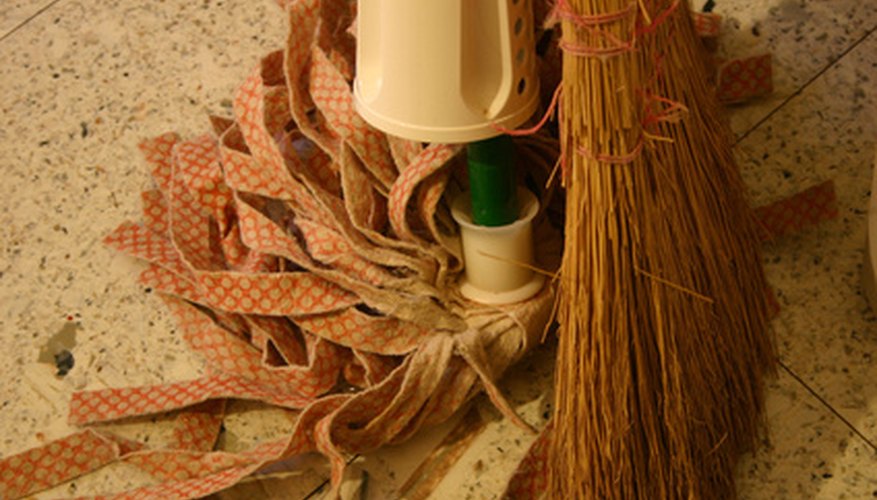Wet mops and toilet brushes may be covered with germs and bacteria after even one use. The tools you use to keep your home clean must be properly stored and put away every time. If you improperly store wet items after using them for cleaning, they can spread germs when you go to use them again.
Clean Mop Heads
Wet mop heads should be cleaned prior to being stored. After each use, wash the mop head in soapy water and rinse it clean with clear water. Thoroughly wring out the mop to remove any excess water. Some mop heads may be detached and placed in the washing machine; be certain your mop is made for this before laundering it.
- Wet mop heads should be cleaned prior to being stored.
- After each use, wash the mop head in soapy water and rinse it clean with clear water.
Mop Storage
Always store mops with the head up if possible. String mop heads may be hung head down, though you will want to keep them several inches off the floor. Do not store mops with wet heads in a closed-off space, such as within a cupboard or inside a small room. Natural air circulation must be allowed around the mop in order to dry it. Mops may also be placed outdoors in the sun to be allowed to dry. Do not put wet mops inside a bucket or store them against a floor, as mould may develop.
- Always store mops with the head up if possible.
- Do not put wet mops inside a bucket or store them against a floor, as mould may develop.
Disinfecting
Toilet brushes, which are used to clean fecal matter and other waste, must be disinfected after each use. Proper storage begins with proper cleaning practices. After use, rinse the toilet brush with clear water and spray it with bleach or another disinfectant. If you store a germ-ridden toilet brush, you will reintroduce germs into your toilet every time you go to clean it out.
- Toilet brushes, which are used to clean fecal matter and other waste, must be disinfected after each use.
Toilet Brush Storage
Toilet brushes are often sold in a set with a specially-designed holder meant to store the brush between uses. If a special brush holder is not available or unsuitable in some way, use a large flower pot or terracotta planter to hold the item. Pots and planters are usually designed with drainage holes. Cut a screen to sit near the bottom of the pot and place the brush inside. Keep a large dish under the pot itself to catch any water that drains away from the brush as the item dries inside the pot.
- Toilet brushes are often sold in a set with a specially-designed holder meant to store the brush between uses.
- Keep a large dish under the pot itself to catch any water that drains away from the brush as the item dries inside the pot.
